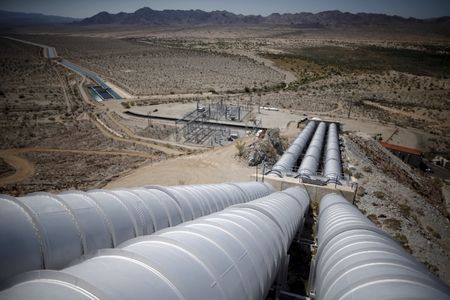
Investing.com — President-elect Donald Trump has promised to encourage increased oil production, reigniting debates over the nation’s energy policy. However, the prevailing trends in the energy sector suggest that such initiatives may face strong resistance, not from regulators or environmentalists, but from the oil industry itself, according to CFRA Research.
U.S. crude oil production has already surged by 50% since 2014, reaching 13.2 million barrels per day (mmb/d) in September 2024, just 1.2% shy of the all-time high recorded in August of the same year.
The U.S. remains the top crude oil producer globally, outpacing Saudi Arabia and Russia. This production growth has occurred despite relatively modest investments in new drilling. Improved technology has enabled companies to extract more oil from existing resources efficiently, rendering extensive capital spending less critical.
“Oil producers are cautious spenders because they remember 2009. And 2016. And 2020,” notes CFRA.
Companies have shifted their focus from aggressive growth to shareholder returns, with dividends and buybacks accounting for 36% of capital spending by oil-focused exploration and production firms (E&Ps) in 2024. This figure represents a significant increase from 23% in 2014, signaling a clear priority shift away from reinvestment in oilfield development.
“If anything, U.S. oil producers are diverting a smaller share of cash flow toward new production – and production is doing just fine,” CFRA said in the note.
Despite limited reinvestment, production remains robust, largely due to technological advancements.
Fracking techniques have become more efficient, with a smaller number of fracs delivering the majority of output. This efficiency, while beneficial to producers like EOG Resources (NYSE:) and Diamondback (NASDAQ:) Energy, poses challenges for oilfield services providers such as Halliburton (NYSE:), Schlumberger (NYSE:), and Baker Hughes (NASDAQ:). These firms have seen their revenue per barrel of U.S.-produced crude oil decline by 43% since 2014.
Instead of ramping up drilling, many E&Ps are turning to mergers and acquisitions to boost production. Recent deals, including Diamondback Energy’s $26 billion acquisition of Endeavor Energy, highlight the industry’s preference for inorganic growth.
“We think the turn toward inorganic growth is sensible in an environment where investors are penalizing firms that suggest robust organic spending growth,” CFRA continued. Even companies that have avoided major M&A activity are expected to achieve production growth, albeit at more modest rates.
In conclusion, while Trump’s rhetoric may call for a return to “Drill, Baby, Drill,” the industry’s focus on capital discipline, efficiency, and shareholder returns could temper any surge in new drilling activity.
#U.S #produce #crude #oil #Trump #Investing.com